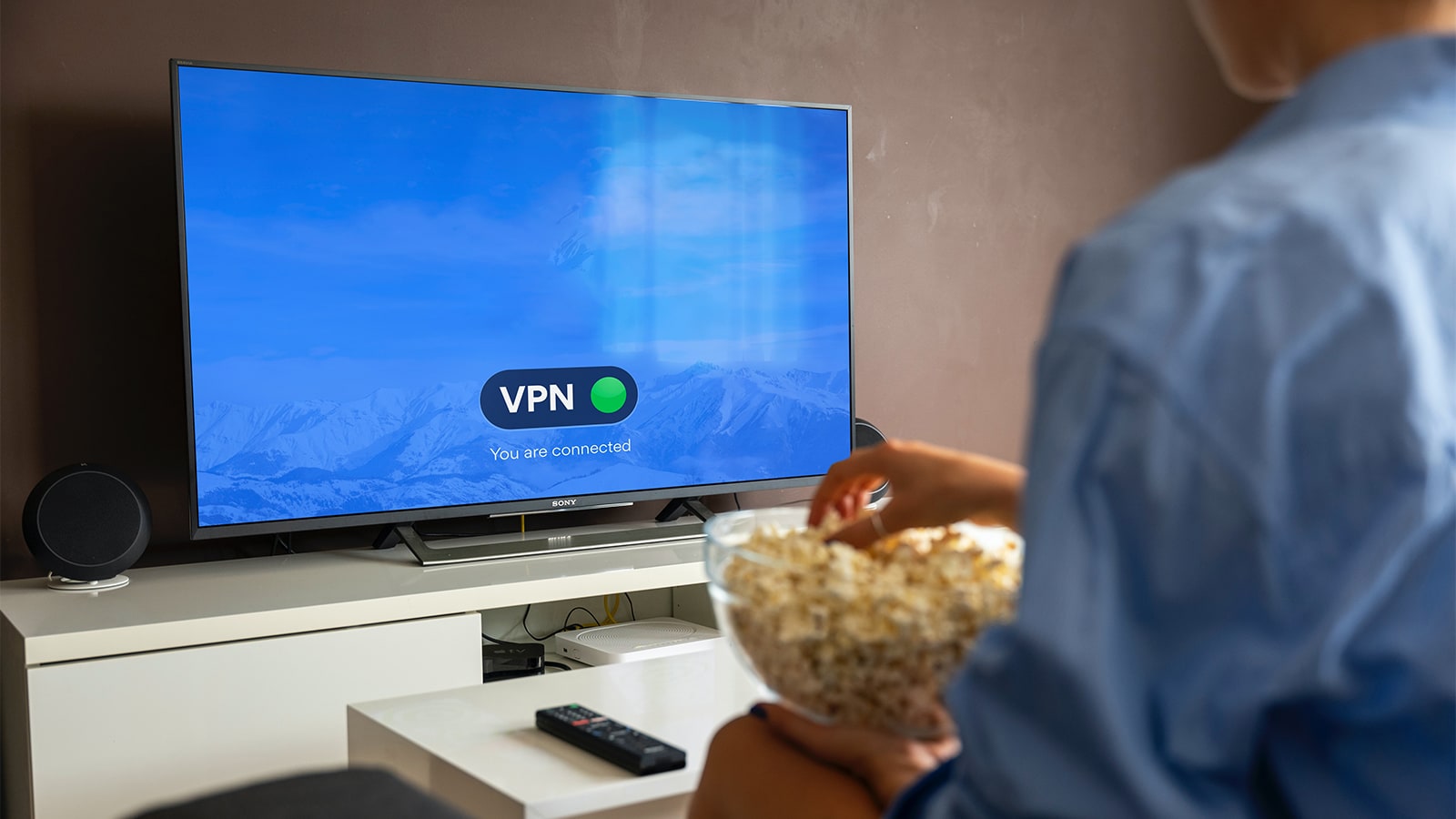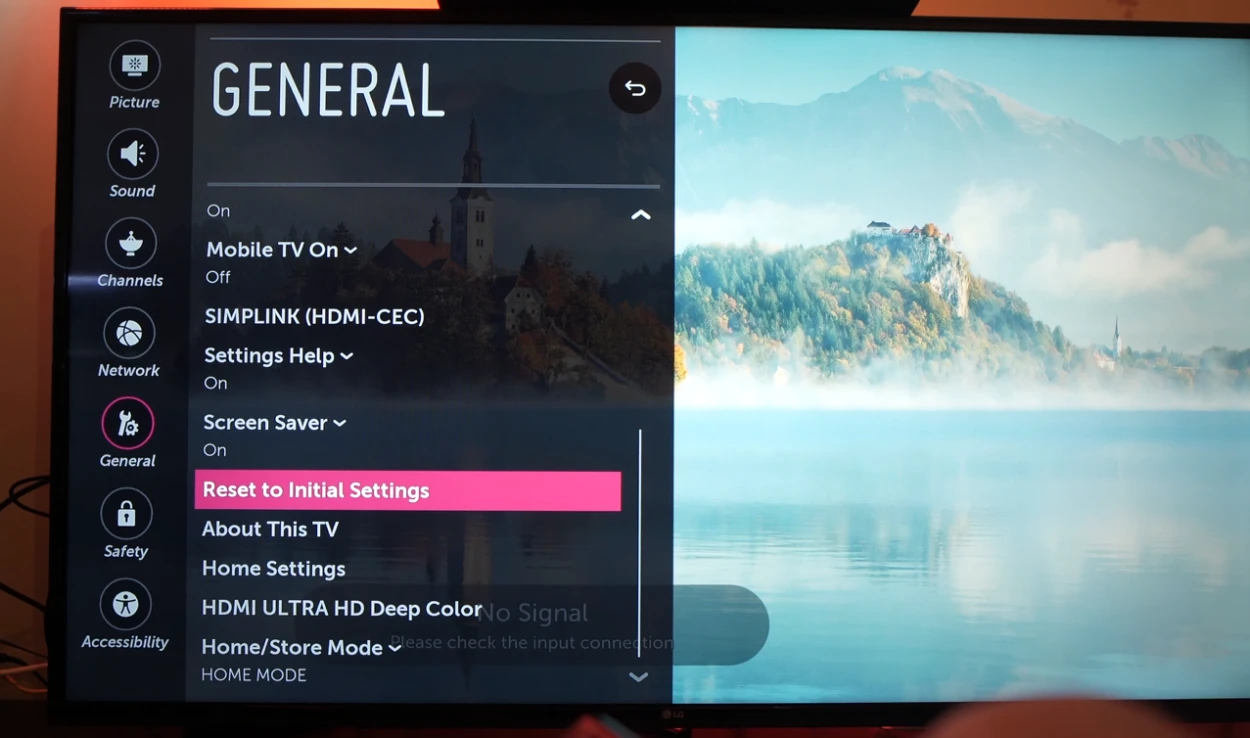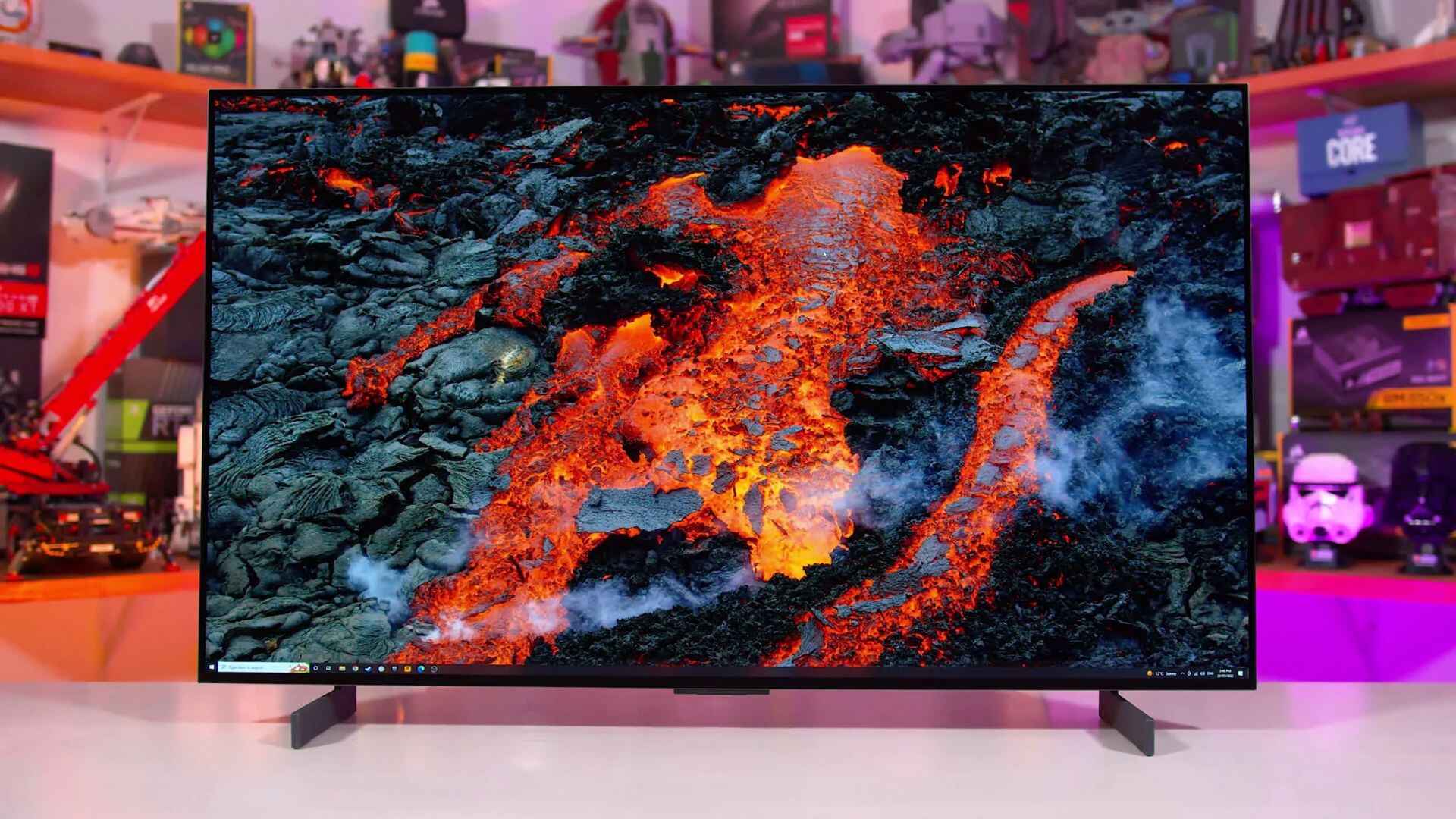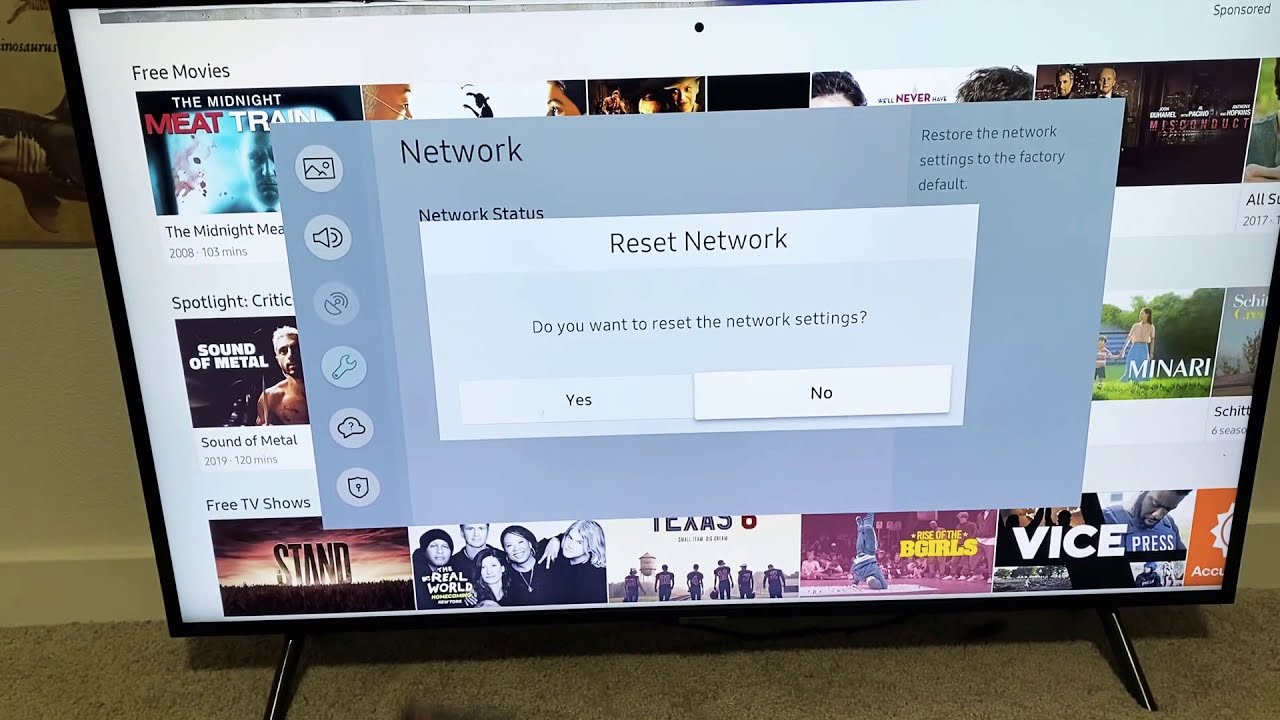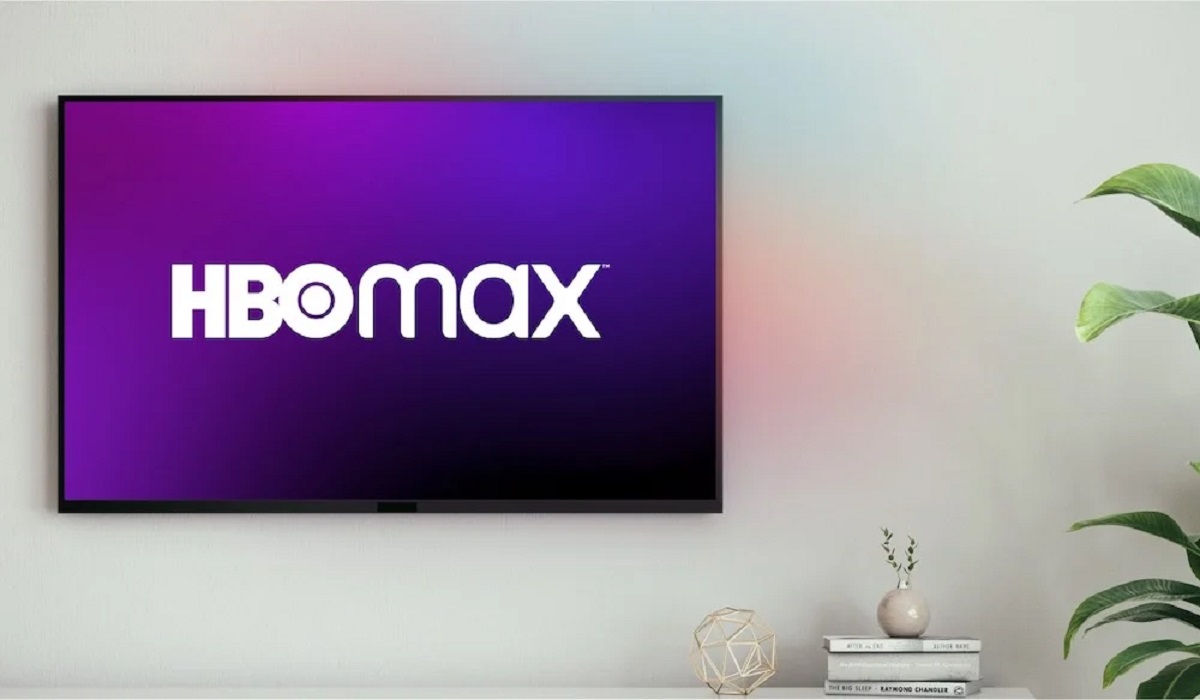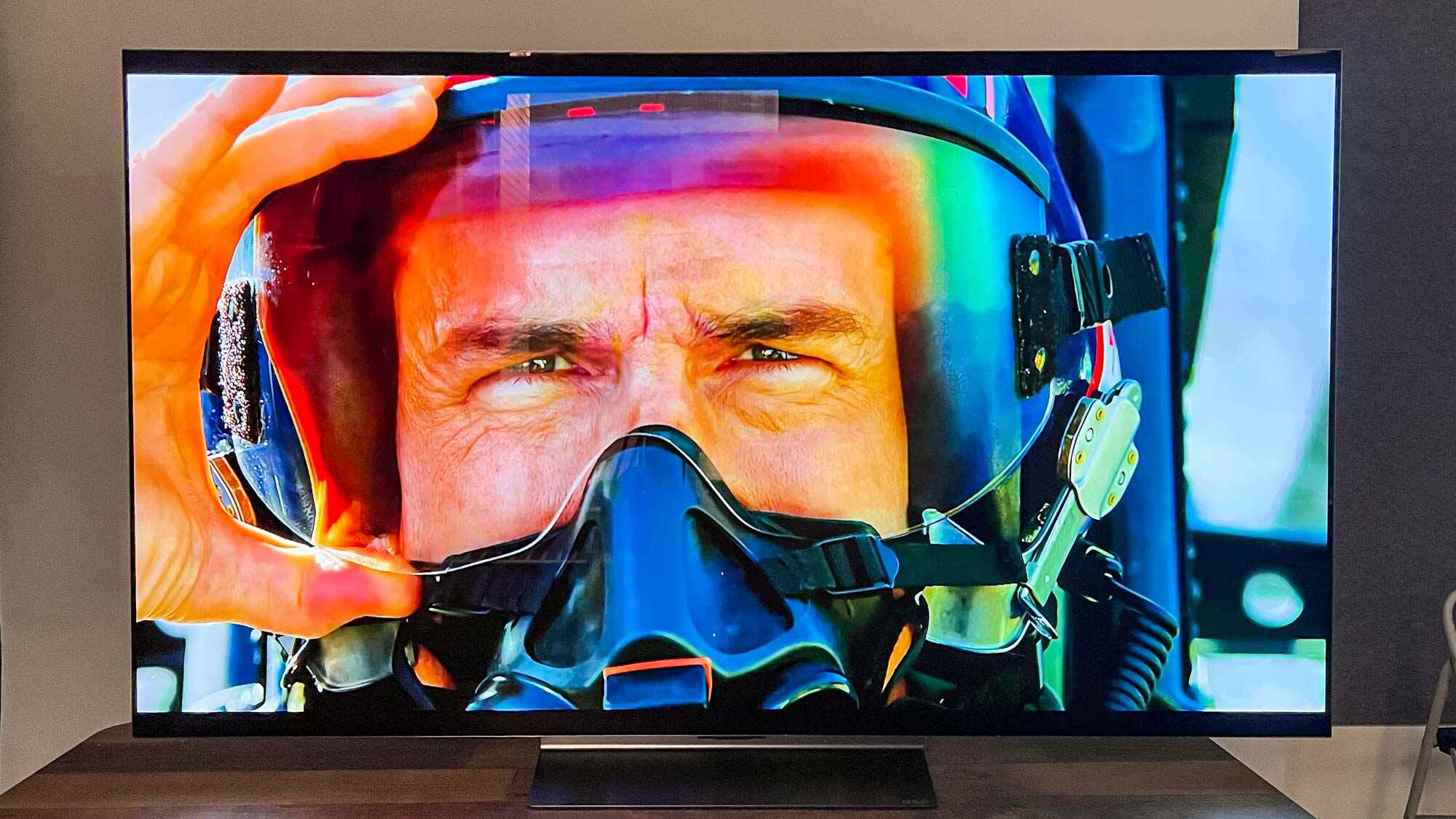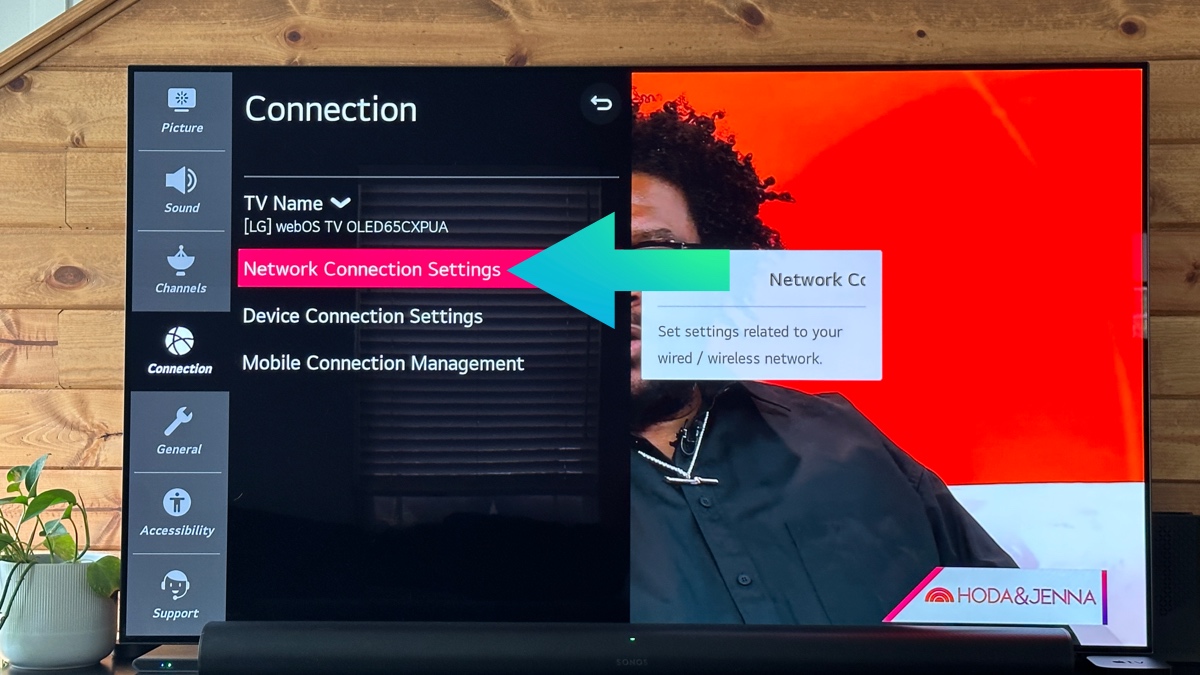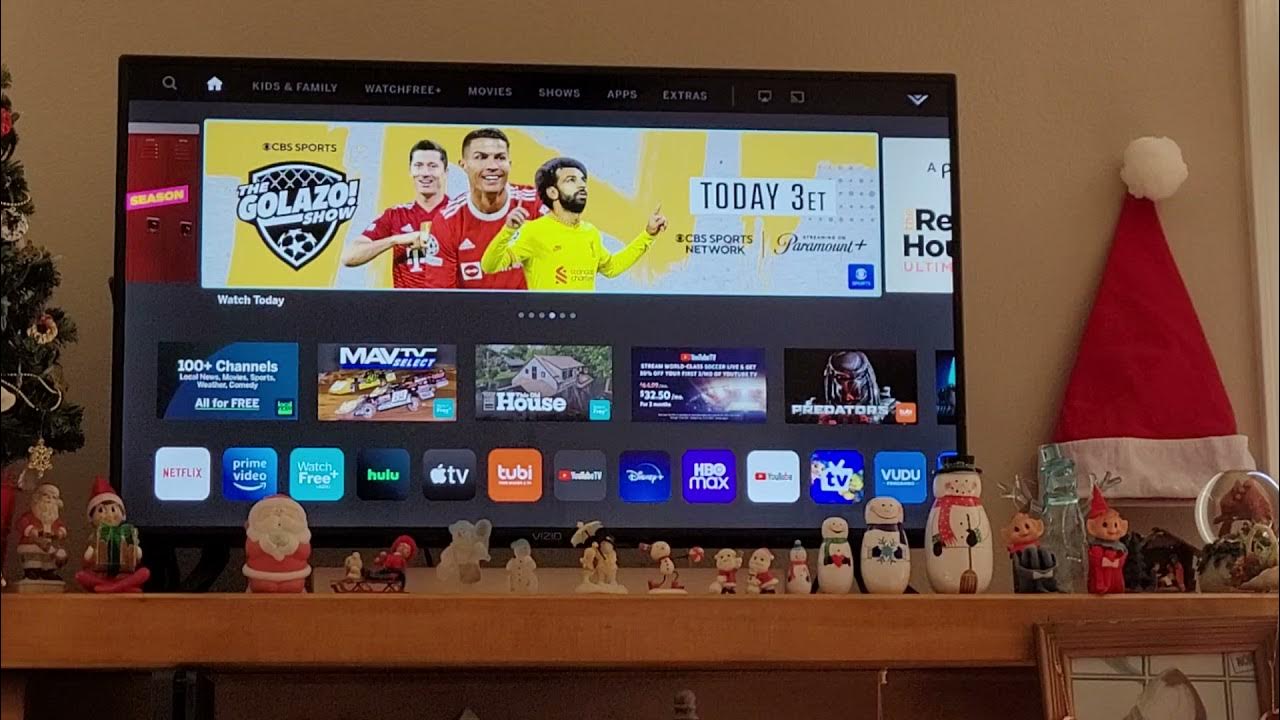Possible Reasons for Disconnection
Experiencing frequent disconnections between your smart TV and the internet can be frustrating, especially when you’re in the middle of streaming your favorite shows or movies. There could be several reasons behind this issue, and understanding them can help you troubleshoot and resolve the problem. Here are some of the possible reasons why your smart TV keeps disconnecting from the internet:
Wi-Fi Signal Interference: One of the common culprits behind connectivity issues is interference from other devices. Wireless devices such as cordless phones, microwaves, and even neighboring Wi-Fi networks can disrupt the Wi-Fi signal, leading to intermittent disconnections.
Distance from the Wi-Fi Router: If your smart TV is located far away from the Wi-Fi router, it may experience weak signal strength, resulting in frequent dropouts. Walls, floors, and other obstacles can also hinder the Wi-Fi signal, so make sure your TV is within a reasonable distance from the router.
Outdated Firmware: Just like any other electronic device, smart TVs require firmware updates to maintain optimal performance. Outdated firmware can cause compatibility issues with your home network, leading to connectivity problems. Check for firmware updates for your TV model and install them if available.
Network Connectivity Issues: Sometimes, the problem lies with your internet connection itself. Issues with your ISP or problems with the network infrastructure can cause intermittent disconnections. Contact your internet service provider to rule out any network issues.
Overcrowded Wi-Fi Network: If you live in a densely populated area or an apartment building with multiple Wi-Fi networks nearby, it’s possible that network congestion is causing connectivity issues. This congestion can lead to slow speeds and frequent disconnections. Consider changing your Wi-Fi channel to avoid interference from other networks.
DNS Configuration Problems: Incorrect or misconfigured Domain Name System (DNS) settings can also cause connectivity problems. Check your DNS settings on the smart TV and ensure they are correctly configured. You can try using a public DNS service like Google DNS or OpenDNS for better reliability.
Wi-Fi Channel Congestion: Wi-Fi channels can become congested, especially if you live in an area with many Wi-Fi networks. Switching to a less crowded channel can improve your Wi-Fi performance and reduce disconnections. You can use Wi-Fi analyzer apps to identify the least congested channel in your area.
Power Saving Mode: Some smart TVs have power-saving features that automatically turn off or reduce the power to the Wi-Fi adapter to conserve energy. Check your TV settings and disable any power-saving features that may be affecting your Wi-Fi connection stability.
Media Streaming Apps: Certain media streaming apps on your smart TV may have compatibility issues or bugs that can cause disconnecting issues. Make sure you are using the latest version of the apps, and if the problem persists, try uninstalling and reinstalling the problematic apps.
Understanding the potential reasons for your smart TV’s internet disconnection can help you pinpoint and troubleshoot the issue. In the following sections, we will explore some troubleshooting steps that can help you resolve the problem and enjoy uninterrupted streaming on your smart TV.
Wi-Fi Signal Interference
One of the most common reasons for frequent disconnections between your smart TV and the internet is Wi-Fi signal interference. The Wi-Fi signal can be disrupted by various devices and obstacles in your home, causing the connection to become unstable or even drop entirely. Understanding the sources of interference can help you take appropriate steps to mitigate the problem.
Wireless Devices: Other wireless devices in your home, such as cordless phones, baby monitors, or wireless speakers, can interfere with the Wi-Fi signal. These devices operate on similar frequencies as Wi-Fi signals and can cause signal congestion, resulting in connection issues. Keep your smart TV away from these devices or move them further away from your Wi-Fi router.
Microwaves: Microwaves emit electromagnetic waves that can interfere with Wi-Fi signals. If your smart TV is placed near a microwave, the Wi-Fi signal may drop or become unstable when the microwave is in use. Relocate your smart TV away from the microwave or place them on different frequencies to reduce interference.
Neighboring Wi-Fi Networks: In densely populated areas, there might be multiple Wi-Fi networks operating in proximity. These networks can overlap and cause signal congestion, leading to connectivity issues. Changing your Wi-Fi channel to a less crowded one can help minimize interference from neighboring networks.
Physical Obstacles: Walls, floors, and other physical objects can obstruct the Wi-Fi signal, reducing its strength and causing intermittent disconnections. The more barriers between your smart TV and the Wi-Fi router, the weaker the signal will be. If possible, position the router and TV in the same room or consider using Wi-Fi range extenders to improve signal coverage.
Electromagnetic Interference: Electronic devices like fluorescent lights, Bluetooth devices, and even large appliances can generate electromagnetic interference that interferes with Wi-Fi signals. Keep your smart TV away from these devices to reduce the risk of connectivity issues.
To minimize Wi-Fi signal interference, you can try the following steps:
- Ensure your smart TV and Wi-Fi router are placed in an open area without any physical barriers between them.
- Keep your smart TV away from other wireless devices and electronics that may cause interference.
- Change your Wi-Fi channel to a less crowded one using your router’s settings.
- Consider using Wi-Fi range extenders or mesh systems to improve signal coverage in your home.
By addressing Wi-Fi signal interference, you can enhance the stability and reliability of your smart TV’s internet connection, reducing the frequency of disconnections and ensuring uninterrupted streaming.
Distance from the Wi-Fi Router
The distance between your smart TV and the Wi-Fi router can significantly impact the quality and stability of the Wi-Fi signal. If your smart TV is located far away from the router, the signal strength may weaken, leading to frequent disconnections. Understanding the importance of proximity and taking appropriate measures can help improve your smart TV’s internet connectivity.
When the distance between the smart TV and the Wi-Fi router increases, the Wi-Fi signal has to travel through walls, furniture, and other obstacles, leading to signal degradation. Additionally, the signal strength reduces with distance, further impacting the connection stability.
Here are some steps you can take to ensure that the distance from the Wi-Fi router doesn’t cause frequent disconnections:
- Optimal Placement: Position the Wi-Fi router in a central location in your home. This helps in distributing the signal evenly to different areas, including where your smart TV is located.
- Reduce Obstacles: Minimize the number of physical barriers between the router and your smart TV. Walls, floors, and large furniture can block or weaken the Wi-Fi signal. Try to place the router and TV in the same room or remove any unnecessary obstacles that might hinder the signal.
- Consider Wi-Fi Extenders: If your smart TV is in a distant area of your home, where the Wi-Fi signal is weak, consider using Wi-Fi range extenders or mesh systems. These devices help boost the signal strength and extend the coverage area, ensuring a stable connection for your smart TV.
- Relocate the Router: If possible, you can consider relocating the Wi-Fi router to a more central location, closer to where your smart TV is located. This can help reduce the distance and improve signal strength.
- Invest in a Wi-Fi Booster: If extending your Wi-Fi range is challenging due to the layout of your home or other factors, you can explore Wi-Fi boosters or powerline adapters. These devices can amplify the Wi-Fi signal or utilize your home’s electrical wiring to extend the network coverage.
By considering the distance between your smart TV and the Wi-Fi router, as well as implementing these suggestions, you can significantly improve the Wi-Fi signal strength and minimize disconnections, ensuring a more stable and reliable internet connection for your smart TV.
Outdated Firmware
An often overlooked but significant factor that can cause frequent disconnections between your smart TV and the internet is outdated firmware. Firmware acts as the operating system of your smart TV, and outdated firmware can result in compatibility issues with your home network, leading to connectivity problems. It’s essential to regularly check for firmware updates for your smart TV and keep it up to date to ensure optimal performance and connectivity.
Manufacturers release firmware updates to address various issues, including bugs, security vulnerabilities, and performance enhancements. These updates also improve compatibility with the latest technologies and protocols used by your home network.
Here are the steps to check for and update the firmware on your smart TV:
- Check for Updates: Navigate to the settings menu of your smart TV, typically found in the system or setup section. Look for an option called “Software Update,” “Firmware Update,” or something similar. Select it to check for available updates.
- Download and Install: If your smart TV detects an available firmware update, follow the on-screen instructions to download and install it. The specific steps may vary depending on your TV’s brand and model.
- Use official sources: When updating your smart TV’s firmware, it is crucial to only use official sources. Visit the manufacturer’s official website or use the built-in update feature on the TV itself. Avoid downloading firmware from third-party websites as they may contain malware or be incompatible with your TV model.
- Enable Automatic Updates: Some smart TVs allow you to enable automatic firmware updates. Enabling this option ensures that your TV receives the latest updates as soon as they are available, eliminating the need for manual checks.
Keeping your smart TV’s firmware up to date can resolve compatibility issues, enhance network connectivity, and improve overall performance. It is recommended to check for firmware updates periodically and install them as they become available.
By ensuring your smart TV has the latest firmware, you can minimize the chances of disconnection issues caused by outdated software and enjoy a more stable and reliable internet connection for your streaming needs.
Network Connectivity Issues
When troubleshooting frequent disconnections between your smart TV and the internet, it’s important to consider potential network connectivity issues. Sometimes, the problem lies with your internet connection itself or issues with the network infrastructure, leading to intermittent disconnections. Addressing these network-related factors can help you resolve the connectivity problems.
Here are some common network connectivity issues that can cause disconnections:
- ISP Problems: Your internet service provider (ISP) may experience technical difficulties or outages in your area, resulting in intermittent disconnections. Contact your ISP’s customer support to inquire about any ongoing issues and seek assistance in resolving the problem.
- Router Configuration: Incorrect router settings or misconfigurations can affect the overall network connectivity. Ensure that your router has the correct settings, such as the appropriate IP address, subnet mask, gateway, and DNS server addresses. Resetting the router to its default settings and reconfiguring it can sometimes resolve connectivity issues.
- Network Congestion: During peak hours or in high population density areas, network congestion can occur, leading to slow speeds and frequent disconnections. You can check with your ISP about their network capacity or consider switching to a higher-speed internet plan to address this issue.
- Physical Connection Problems: Check if the Ethernet cable connecting your smart TV to the router is securely plugged in. Loose or damaged cables can cause intermittent disconnections. If possible, try using a different Ethernet cable to eliminate this as a potential issue.
- Modem or Router Issues: Sometimes, the problem lies with the modem or router itself. Power cycle both devices by unplugging them from the power source, waiting for a few minutes, and plugging them back in. This can refresh the connection and resolve any temporary issues.
- Firewall or Security Settings: Firewalls and security settings can sometimes block or interfere with the connection between your smart TV and the internet. Temporarily disable any firewalls or security software on your router or smart TV to see if it resolves the disconnection problem. Remember to re-enable them once troubleshooting is complete.
If you suspect that network connectivity issues are causing frequent disconnections, here are some troubleshooting steps you can take:
- Restart your modem and router by unplugging them and plugging them back in after a few minutes.
- Check if other devices connected to the same network experience similar disconnection issues. If so, it indicates a network problem rather than a specific issue with your smart TV.
- Reset your router to its default settings and reconfigure it if necessary.
- Test your internet connection speed using an online speed test tool to ensure you are receiving the expected bandwidth from your ISP.
By addressing network connectivity issues, you can improve the stability and reliability of your smart TV’s internet connection, minimizing disconnections and ensuring uninterrupted streaming.
Overcrowded Wi-Fi Network
Living in a densely populated area or an apartment building with multiple Wi-Fi networks nearby can contribute to frequent disconnections between your smart TV and the internet. Overcrowded Wi-Fi networks can lead to network congestion, resulting in slow speeds, signal interference, and frequent disconnections. Understanding this issue and taking appropriate measures can help alleviate the problem.
Here are some factors that contribute to an overcrowded Wi-Fi network:
- Neighboring Wi-Fi Networks: In highly populated areas, there might be numerous Wi-Fi networks operating in close proximity. These networks can overlap and interfere with each other, causing signal congestion and resulting in connectivity issues.
- Interference: The overlapping frequencies of multiple Wi-Fi networks can lead to interference, leading to reduced signal quality and disrupted connections. Other wireless devices, such as cordless phones and baby monitors, can also contribute to interference.
- Bandwidth Sharing: When too many devices are connected to the same Wi-Fi network, the available bandwidth gets divided among them, resulting in decreased speeds and potential disconnections.
To address an overcrowded Wi-Fi network and improve connectivity, consider the following steps:
- Change Wi-Fi Channel: Most routers allow you to change the Wi-Fi channel manually. By switching to a less crowded channel, you can minimize interference from neighboring networks and improve your smart TV’s connection stability. Use a Wi-Fi analyzer app to identify the least congested channel in your area.
- Upgrade to a Dual-Band Router: Dual-band routers operate on two different frequency bands – 2.4 GHz and 5 GHz. The 2.4 GHz band is usually more susceptible to interference due to its widespread use. Upgrading to a 5 GHz router can provide a cleaner and less congested connection for your smart TV.
- Limit Connected Devices: If possible, reduce the number of devices connected to your Wi-Fi network. This can help alleviate network congestion, ensuring a more stable and reliable connection for your smart TV.
- Consider a Wi-Fi Extender or Mesh System: Wi-Fi extenders or mesh systems can help extend the coverage of your Wi-Fi network, allowing for better signal strength and reduced interference. These devices can enhance the overall network performance and minimize disconnections.
By addressing the overcrowded Wi-Fi network issue, you can improve the quality of your smart TV’s internet connection. Minimizing interference and optimizing your network’s bandwidth allocation will result in a more stable and reliable streaming experience for your smart TV.
DNS Configuration Problems
DNS (Domain Name System) configuration problems can contribute to connectivity issues and frequent disconnections between your smart TV and the internet. The DNS system helps translate domain names into IP addresses, allowing your smart TV to connect to websites and other online services. Incorrect or misconfigured DNS settings can disrupt this translation process and lead to connectivity problems. Addressing DNS configuration problems can help resolve the disconnection issues you’re experiencing.
Here are some common DNS configuration problems and steps to resolve them:
- Incorrect DNS Server Addresses: Ensure that the DNS server addresses configured on your smart TV are correct. Consult your ISP’s documentation or contact their customer support to obtain the appropriate DNS server addresses. Alternatively, you can use public DNS servers like Google DNS (8.8.8.8, 8.8.4.4) or OpenDNS (208.67.222.222, 208.67.220.220) for reliable DNS resolution.
- Misconfigured DNS Settings: Access the network settings menu on your smart TV and verify that the DNS settings are properly configured. If you’re not sure, you can reset the network settings to their default values and reconfigure them accordingly.
- Flush DNS Cache: Sometimes, DNS cache can become corrupted or outdated, leading to connection issues. To flush the DNS cache, access the network settings on your smart TV and look for the option to clear or flush the DNS cache. This will force the TV to retrieve fresh DNS information.
- Restart DNS Services: If you have a home network with a DNS server, restarting the DNS server services can sometimes resolve connectivity problems. Restart the DNS server and check if it resolves the disconnection issue.
If you’re unsure how to configure DNS settings on your smart TV, consult the manufacturer’s documentation or their support website for step-by-step instructions. It’s important to follow the proper procedures to ensure correct DNS configuration.
By addressing DNS configuration problems, you can ensure that your smart TV can properly resolve domain names and establish a stable and reliable internet connection. Correctly configured DNS settings will help prevent frequent disconnections and enhance your overall streaming experience.
Wi-Fi Channel Congestion
Wi-Fi channel congestion can be a leading cause of frequent disconnections between your smart TV and the internet, especially in densely populated areas or locations with numerous Wi-Fi networks nearby. When multiple Wi-Fi networks operate on the same channel or overlap with each other, it can result in signal interference and connectivity issues. Understanding Wi-Fi channel congestion and taking appropriate measures can help improve your smart TV’s connection stability.
Here are some factors that contribute to Wi-Fi channel congestion:
- Neighboring Wi-Fi Networks: In close proximity, neighboring Wi-Fi networks may be operating on the same or overlapping channels. This can cause interference, leading to signal congestion and disconnection problems.
- High Population Density Areas: In densely populated areas, a greater number of Wi-Fi networks compete for limited frequencies, resulting in more channel congestion and potential connectivity issues.
- Automatic Channel Selection: Some routers are set to automatically select the Wi-Fi channel, which may not always choose the least congested one. This can contribute to increased channel congestion and interference.
To address Wi-Fi channel congestion and improve connectivity, consider the following steps:
- Wi-Fi Channel Analysis: Use Wi-Fi analyzer apps or software to identify the least congested channels in your area. This will help you determine which channels are experiencing the least interference and select the best channel for your Wi-Fi network.
- Manually Change Wi-Fi Channel: Access your router’s settings and manually change the Wi-Fi channel to one that experiences less congestion. This can help reduce interference and improve connection stability for your smart TV.
- Use the 5 GHz Band: If your router supports it, switch to the 5 GHz band instead of the 2.4 GHz band. The 5 GHz band typically offers more channels and less interference, resulting in improved performance and reduced disconnections.
- Upgrade to a Dual-Band Router: If your current router only supports the 2.4 GHz band, consider upgrading to a dual-band router that supports both 2.4 GHz and 5 GHz bands. This will provide you with more options to avoid channel congestion and interference.
By addressing Wi-Fi channel congestion, you can optimize your smart TV’s connection stability, minimize signal interference, and reduce the frequency of disconnections. Selecting the least congested channel and utilizing the 5 GHz band can significantly enhance your smart TV’s streaming experience.
Power Saving Mode
Power saving mode on your smart TV can be another potential reason for frequent disconnections from the internet. Power-saving features are designed to conserve energy by automatically turning off or reducing the power to certain components of your smart TV, including the Wi-Fi adapter. While these features are beneficial for energy efficiency, they can sometimes interfere with the stability of your Wi-Fi connection. Understanding the impact of power saving mode and making the necessary adjustments can help improve your smart TV’s connection reliability.
Here are some factors to consider regarding power saving mode:
- Wi-Fi Adapter Power Reduction: In power saving mode, the Wi-Fi adapter on your smart TV may be set to operate at a lower power level. This can affect the range and stability of the Wi-Fi connection, leading to disconnections.
- Automatic Wi-Fi Adapter Turn-off: To conserve power, power-saving features may automatically turn off the Wi-Fi adapter on your smart TV when it’s not in use for a certain period. This can result in delays when reconnecting to Wi-Fi networks and potential disconnection issues.
If you suspect that power saving mode is causing the disconnection problem, consider the following steps:
- Adjust Power Saving Settings: Access the settings menu on your smart TV and navigate to the power-saving options. Disable or adjust the power-saving settings related to the Wi-Fi adapter. This can prevent the adapter from reducing power or turning off automatically.
- Disable Power Saving Mode: If you do not prioritize energy efficiency and prefer a more stable internet connection, you can consider disabling power-saving mode altogether. This will ensure that all components, including the Wi-Fi adapter, function at their maximum capability without any power-saving restrictions.
However, keep in mind that disabling power saving mode might increase energy consumption. Therefore, it’s important to strike a balance between energy efficiency and connectivity stability based on your requirements.
By adjusting the power saving settings on your smart TV, you can potentially reduce Wi-Fi disconnections and improve the stability of your internet connection. Consider experimenting with different power-saving configurations to find the right balance between energy efficiency and reliable Wi-Fi connectivity for your smart TV.
Media Streaming Apps
One possible cause for frequent disconnections between your smart TV and the internet is related to the media streaming apps you use. While these apps provide access to a vast library of content, they can sometimes have compatibility issues or bugs that result in disconnection problems. Understanding the potential issues and taking appropriate steps can help ensure a smoother streaming experience.
Here are some factors to consider when it comes to media streaming apps:
- App Compatibility: Ensure that the media streaming apps you use on your smart TV are compatible with the device and its operating system. Outdated or incompatible apps may not work properly and can lead to frequent disconnections.
- App Updates: Keep your media streaming apps up to date by regularly checking for available updates. App updates often address bugs and performance issues, ensuring a better streaming experience. Check the respective app stores or the manufacturer’s website for the latest versions.
- Uninstall and Reinstall: If you continue to experience disconnection problems with a specific media streaming app, try uninstalling it from your smart TV and reinstalling it. This can help resolve any potential app-related issues and ensure a fresh installation.
- Internet Speed and Bandwidth: Insufficient internet speed or limited bandwidth can result in buffering and disconnections while streaming. Check your internet connection speed and bandwidth to ensure it meets the minimum requirements suggested by the media streaming apps.
- Switch to Wired Connection: If your smart TV allows for a wired connection, consider using an Ethernet cable to connect it directly to your router. This can provide a more stable and reliable connection, reducing the chances of disconnections caused by wireless interference or signal strength issues.
Understanding the importance of media streaming apps and their impact on the stability of your smart TV’s internet connection can help you troubleshoot and rectify disconnection issues. By keeping these apps updated, ensuring compatibility, and maintaining a stable internet connection, you can enhance your streaming experience and minimize connection interruptions.
Troubleshooting Steps
If you have been experiencing frequent disconnections between your smart TV and the internet, following some troubleshooting steps can help identify and resolve the underlying issues. Here are some recommended steps to troubleshoot and improve your smart TV’s internet connectivity:
- Resetting the Wi-Fi Connection Settings: Begin by resetting the Wi-Fi connection settings on your smart TV. Access the settings menu and locate the network or Wi-Fi options. Choose the option to reset the Wi-Fi settings to default. This can help clear any existing network configurations that might be causing connectivity problems.
- Updating the Smart TV Firmware: Check for firmware updates for your smart TV model. Outdated firmware can lead to compatibility issues and result in frequent disconnections. Follow the instructions provided by the manufacturer to download and install the latest firmware version for your TV.
- Adjusting Wi-Fi Signal Strength: Ensure that your smart TV is within a reasonable distance from the Wi-Fi router. Consider repositioning the router or the TV to improve signal strength. If the signal is weak, you may experience frequent disconnections. Utilize Wi-Fi range extenders or mesh systems to extend the coverage if necessary.
- Changing Wi-Fi Channels: Check if your Wi-Fi network is operating on a congested channel. Access your router’s settings and manually switch to a less crowded channel. This can minimize interference from neighboring networks and improve your smart TV’s connection stability.
- Using a Wi-Fi Extender or Booster: If the distance between your smart TV and the Wi-Fi router is too far, resulting in a weak signal, consider using a Wi-Fi extender or booster. These devices amplify the Wi-Fi signal and extend its reach, ensuring a stronger and more reliable connection for your smart TV.
- Checking for Software Updates of Streaming Apps: Ensure that the media streaming apps you use on your smart TV are up to date. Check the respective app stores or the manufacturer’s website for any available updates. Keeping the apps updated can resolve compatibility issues and enhance your streaming experience.
- Contacting your Internet Service Provider (ISP): If none of the above steps resolve the frequent disconnection problem, it may be necessary to contact your ISP for further assistance. They can check for any network issues in your area, perform diagnostics on your connection, or provide additional guidance to address the problem.
By following these troubleshooting steps, you can identify and address the underlying causes of frequent disconnections between your smart TV and the internet. Take the necessary measures to optimize your Wi-Fi connection, keep your TV’s firmware up to date, and ensure that media streaming apps are functioning correctly, helping to maintain a stable and reliable internet connection for uninterrupted streaming on your smart TV.
Resetting the Wi-Fi Connection Settings
If you are experiencing frequent disconnections between your smart TV and the internet, resetting the Wi-Fi connection settings can often help resolve the issue. Over time, network configurations and settings on your smart TV can become misconfigured or corrupted, leading to connectivity problems. Resetting the Wi-Fi connection settings can clear any problematic settings and restore the connection to its default state. Here’s how you can do it:
- Access the settings menu on your smart TV. The exact location may vary depending on the make and model of your TV.
- Locate the network or Wi-Fi settings option.
- Look for a sub-menu or section that allows you to reset the network connections or Wi-Fi settings. It may be labeled with options such as “Reset Network Settings,” “Clear Wi-Fi Settings,” or something similar.
- Select the option to reset the Wi-Fi connection settings. Confirm your decision when prompted.
- Once the reset is complete, the Wi-Fi connection settings will be restored to their default configuration.
It’s important to note that resetting the Wi-Fi connection settings will remove any saved Wi-Fi networks on your smart TV. You will need to reconnect to your Wi-Fi network after the reset and enter the Wi-Fi password, if required.
Resetting the Wi-Fi connection settings can often resolve connectivity issues caused by misconfigurations or corrupted settings. This process restores the Wi-Fi settings to their default state, eliminating any potential conflicts that may have been causing the disconnections.
If the frequent disconnections persist even after the Wi-Fi connection settings reset, it may be necessary to explore other troubleshooting steps or contact your internet service provider for further assistance. However, in many cases, resetting the Wi-Fi connection settings can be an effective first step in resolving the issue and restoring a stable internet connection for your smart TV.
Updating the Smart TV Firmware
One of the common causes for frequent disconnections between your smart TV and the internet is outdated firmware. Firmware acts as the operating system of your smart TV, governing its functionalities and capabilities. Manufacturers release firmware updates periodically to address bugs, improve performance, and enhance compatibility with the latest technologies and internet protocols. By updating the firmware on your smart TV, you can ensure optimal performance and resolve connectivity issues. Here’s how you can update the firmware on your smart TV:
- Access the settings menu on your smart TV. The location of the settings option may vary depending on the manufacturer and model of your TV.
- Look for a sub-menu or section related to system or firmware settings.
- Within the firmware settings, there should be an option to check for updates. Select this option to initiate the firmware update check.
- If an update is available, follow the on-screen instructions to download and install the latest firmware version. This process may take some time, so ensure that your TV is connected to a stable internet connection during the update.
- Once the update is complete, your smart TV will restart to apply the new firmware, and the updated features and improvements will be available.
It’s essential to update the firmware on your smart TV regularly to ensure optimal performance and resolve any known connectivity issues. Updated firmware often includes bug fixes, security patches, and compatibility enhancements, improving the stability and reliability of your smart TV’s internet connection.
While updating the firmware, it’s important to follow the manufacturer’s instructions and use official sources to download the updates. Beware of unofficial firmware sources, as they may contain malware or cause compatibility issues with your smart TV.
If your smart TV has an option for automatic firmware updates, it’s advisable to enable this feature. Automatic updates ensure that your TV receives the latest firmware versions as soon as they become available, without the need for manual checks.
By keeping your smart TV’s firmware up to date, you can address compatibility issues, enhance network connectivity, and improve overall performance. Regular firmware updates ensure that your smart TV functions optimally and minimizes the risk of frequent disconnections and other connectivity problems.
Adjusting Wi-Fi Signal Strength
Weak Wi-Fi signal strength can be a common reason for frequent disconnections between your smart TV and the internet. A weak signal can result in unstable connectivity and hinder your streaming experience. Adjusting the Wi-Fi signal strength can help improve the reliability and stability of your smart TV’s internet connection. Consider the following steps to enhance the Wi-Fi signal strength:
- Optimal Router Placement: Position your Wi-Fi router in a central location within your home. This helps distribute the signal more evenly throughout the house, improving the coverage area for your smart TV.
- Remove Obstacles: Physical barriers such as walls, furniture, or appliances can weaken the Wi-Fi signal. Ensure that there are no obstructions between the router and your smart TV. Consider repositioning the router or the TV to minimize the obstacles.
- Check Antenna Alignment: If your router has external antennas, make sure they are properly aligned to maximize the signal strength. Adjusting or rotating the antennas can help optimize the signal reception.
- Use Wi-Fi Range Extenders: Wi-Fi range extenders, also known as wireless repeaters or boosters, can amplify the Wi-Fi signal and extend its range. Place these devices strategically between the router and your smart TV to boost the signal and improve connectivity.
- Upgrade to a Stronger Router: If your current router’s signal strength is inadequate, consider upgrading to a more powerful router with better range and coverage. Look for routers that support the latest Wi-Fi standards, such as 802.11ac or Wi-Fi 6, for improved performance.
- Use Mesh Wi-Fi Systems: Mesh Wi-Fi systems consist of multiple devices that work together to create a seamless, unified network. These systems eliminate Wi-Fi dead zones and provide uniform coverage throughout your home, ensuring a strong and stable connection for your smart TV.
Additionally, there are some DIY methods you can try to improve the Wi-Fi signal strength. For instance, adjusting the router’s transmission power, changing the Wi-Fi channel to a less congested one, or updating the router’s firmware can also help enhance the overall signal quality.
By implementing these techniques to adjust the Wi-Fi signal strength, you can significantly improve the reliability of your smart TV’s internet connection. Enhanced signal strength ensures smoother streaming, fewer interruptions, and a more enjoyable viewing experience.
Changing Wi-Fi Channels
Wi-Fi channel congestion can be a leading cause of frequent disconnections between your smart TV and the internet. When multiple Wi-Fi networks operate on the same channel or overlap with each other, it can result in signal interference and connectivity issues. Changing the Wi-Fi channel can help alleviate congestion and improve your smart TV’s connection stability. Consider the following steps to change your Wi-Fi channel:
- Wi-Fi Channel Analysis: Use a Wi-Fi analyzer app or software to identify the least congested channels in your area. These apps can provide valuable insights into the Wi-Fi networks in proximity and the channels they are using.
- Access Router Settings: Open a web browser on a computer or mobile device connected to the Wi-Fi network. Enter the router’s IP address in the browser’s address bar and log in using the administrator credentials. If you are unsure of the router’s IP address, refer to the manufacturer’s documentation or browse the router’s settings menu.
- Find Wireless Settings: Look for the wireless settings section in the router’s configuration interface. The specific location of this section may vary depending on the router’s make and model.
- Select a New Channel: Locate the channel selection option and choose a different channel from the available options. Ideally, select a channel that is not heavily used by neighboring Wi-Fi networks. Channels 1, 6, and 11 are commonly recommended for 2.4 GHz networks as they do not overlap with each other.
- Save Changes and Reboot: After selecting a new channel, save the changes in the router’s settings. To ensure the changes take effect, reboot the router by power cycling it. Unplug the power cable, wait for a few seconds, and plug it back in.
By changing the Wi-Fi channel to a less congested one, you can minimize interference from neighboring networks and improve your smart TV’s connection stability. However, it’s important to note that changing the channel may not always guarantee a significant improvement in connection quality. Factors such as physical obstacles, distance from the router, and interference from other devices can still affect signal strength.
If you continue to experience disconnection issues after changing the Wi-Fi channel, you can try other troubleshooting steps such as adjusting the position of the router, using Wi-Fi range extenders, or upgrading to a more capable router to improve the signal coverage and strengthen the connection.
By selecting the least congested Wi-Fi channel, you can reduce interference and enhance the stability of your smart TV’s internet connection. This ensures a smoother streaming experience and minimizes disruptions during your favorite shows or movies.
Using a Wi-Fi Extender or Booster
If you are experiencing frequent disconnections between your smart TV and the internet due to weak Wi-Fi signal strength, using a Wi-Fi extender or booster can significantly improve your connectivity. These devices help amplify and extend the Wi-Fi signal, ensuring a stronger and more reliable connection for your smart TV. Here’s how you can set up and use a Wi-Fi extender or booster:
- Choose the Right Device: Select a Wi-Fi extender or booster that is compatible with your existing Wi-Fi router. Look for a device that supports the same Wi-Fi protocols and frequencies as your router (e.g., 2.4 GHz or 5 GHz).
- Position the Extender: Place the Wi-Fi extender or booster in a location where it can receive a strong Wi-Fi signal from your router. This is typically midway between your router and the area where your smart TV is located for optimal coverage.
- Connect to Power: Plug the Wi-Fi extender or booster into a power outlet near your router. Ensure that it receives a reliable power supply for proper functioning.
- Configure the Extender: Follow the manufacturer’s instructions to configure the Wi-Fi extender or booster. This usually involves connecting to its dedicated Wi-Fi network using a computer or mobile device and entering the required setup information.
- Connect to Your Wi-Fi Network: Once the extender is properly configured, connect your smart TV to its extended Wi-Fi network. Check the user manual or the manufacturer’s instructions for details on how to connect your specific smart TV model to the extender’s network.
- Confirm the Connection: Ensure that your smart TV successfully connects to the extender’s network. You can do this by checking the Wi-Fi settings on your TV for the network name you assigned to the extender during setup.
By using a Wi-Fi extender or booster, you can enhance the range and coverage of your Wi-Fi network, ensuring a stronger and more reliable signal for your smart TV. This will help minimize disconnections and provide a stable connection for uninterrupted streaming.
Remember that the effectiveness of a Wi-Fi extender or booster may vary depending on factors such as the distance from the extender, physical obstacles, and the overall Wi-Fi signal quality in your area. Consider experimenting with different placement options and adjusting the extender’s settings to optimize the signal strength for your smart TV.
Using a Wi-Fi extender or booster can be a cost-effective solution to improve Wi-Fi coverage and address weak signal issues. With a stronger and more reliable connection, you can enjoy uninterrupted streaming and a smoother online experience on your smart TV.
Checking for Software Updates of Streaming Apps
When experiencing frequent disconnections between your smart TV and the internet, it’s important to ensure that the streaming apps you use are up to date. Outdated or buggy software can contribute to connectivity issues and result in disconnections. Checking for software updates of your streaming apps can help resolve these problems and improve the overall streaming experience. Here’s how you can check for updates:
- Open the App Store: Access the app store on your smart TV or the device connected to your TV. Most smart TVs have a built-in app store from where you can browse and download apps.
- Go to “My Apps” or “Updates” Section: Look for a section called “My Apps,” “Updates,” or something similar in the app store. This section displays the list of apps installed on your TV and any available updates.
- Check for Updates: Look for the streaming apps you frequently use and check if there are any available updates. The app store will typically display an “Update” button next to the apps that have updates available.
- Update the Apps: Select the streaming apps that have updates and choose the option to update them. This will initiate the download and installation process. Depending on your internet connection speed and the size of the update, the process may take a few minutes.
- Automatic Updates: Some smart TVs or app stores allow you to enable automatic updates for installed apps. If available, consider enabling this feature to ensure that your apps are always up to date without manual checks.
By checking for software updates of your streaming apps, you can ensure that you have the latest versions installed on your smart TV. Software updates often include bug fixes, performance improvements, and new features, all of which can contribute to a better streaming experience.
Outdated apps might not be fully compatible with your smart TV’s firmware or the latest streaming protocols, leading to connectivity issues and even disconnections. Keeping the apps up to date ensures compatibility and enhances the stability of your internet connection.
It’s also worth noting that some smart TVs automatically check for app updates in the background and notify you when updates are available. If you receive such notifications, make sure to install the updates promptly to maintain optimal performance.
By regularly checking for software updates of your streaming apps, you can address any issues that may be causing frequent disconnections. Updated apps provide improved functionality and performance, resulting in a smoother and more enjoyable streaming experience on your smart TV.
Contacting your Internet Service Provider (ISP)
If you have tried troubleshooting steps and are still experiencing frequent disconnections between your smart TV and the internet, it may be necessary to contact your internet service provider (ISP). Your ISP can help diagnose and address any network-related issues that may be causing the connectivity problems. Here’s how you can reach out to your ISP for assistance:
- Gather Information: Before contacting your ISP, gather relevant information about your internet connection. This includes your account details, the specific issues you are experiencing, and any troubleshooting steps you have already taken.
- Customer Support: Locate the customer support contact information for your ISP. This is typically available on their website, bill statement, or the back of your modem/router.
- Call or Online Chat: Connect with your ISP’s customer support through their phone helpline or online chat feature. Be prepared for potential wait times, especially during peak hours.
- Describe the Issue: Clearly explain the disconnection issues you are facing, detailing the frequency and duration of the disconnections. Mention the troubleshooting steps you have already taken to avoid repeating the same steps.
- Follow Guidance: Follow the instructions provided by the ISP’s customer support representative. They may ask you to perform specific tests or provide additional information about your network setup.
- Service Appointment: If the representative determines that an on-site visit is necessary, schedule a service appointment at a convenient time for a technician to assess the network infrastructure and resolve the connectivity issues.
Your ISP has access to network monitoring tools and resources that can help identify any network-related problems. They can check for outages in your area, examine signal levels, or perform tests to diagnose the issue. They may also provide recommendations on specific settings or equipment upgrades that can improve your connection stability.
When contacting your ISP, it’s important to remain patient and polite throughout the conversation. Cooperative communication usually yields better results. Documenting the details of your conversation, including the date, time, and name of the representative, can be helpful for future reference.
Contacting your ISP allows you to leverage their expertise and resources to resolve connectivity issues that may be causing the frequent disconnections between your smart TV and the internet. By working together with your ISP, you can ensure a reliable and stable connection for a seamless streaming experience.
Conclusion
Experiencing frequent disconnections between your smart TV and the internet can be frustrating, but by understanding the possible reasons and implementing appropriate solutions, you can resolve the connectivity issues. Wi-Fi signal interference, distance from the router, outdated firmware, network connectivity problems, overcrowded Wi-Fi networks, DNS configuration problems, power-saving mode, media streaming apps, and other factors can all contribute to the problem.
Through troubleshooting steps such as resetting the Wi-Fi connection settings, updating the smart TV firmware, adjusting the Wi-Fi signal strength, changing Wi-Fi channels, using Wi-Fi extenders or boosters, checking for software updates of streaming apps, and contacting your Internet Service Provider (ISP), you can improve your smart TV’s internet connectivity and reduce disconnections.
Remember to regularly check for firmware updates, keep your apps up to date, and position your smart TV and router optimally for better signal strength. Implementing these measures can significantly enhance your streaming experience, allowing for uninterrupted enjoyment of your favorite shows and movies.
By being proactive and taking the necessary steps to address connectivity issues, you can ensure a stable and reliable internet connection for your smart TV, enhancing your overall entertainment experience in the comfort of your home.









